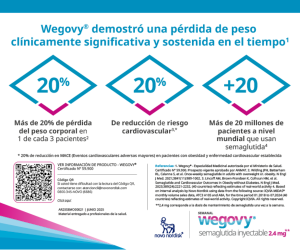Osteoporosis
DOI:
https://doi.org/10.47196/diab.v57i3Sup.680Palabras clave:
diabetes, osteoporosisResumen
En los últimos 30 años se ha demostrado, a través de un creciente cuerpo de evidencia experimental y clínica, que la diabetes mellitus (DM) ejerce efectos deletéreos sobre el tejido óseo, siendo un blanco más de las complicaciones de la DM. Diferentes grupos detectaron un aumento del riesgo de fracturas tanto en pacientes con DM1 asociado a una baja masa ósea, como en DM2 en quienes se puede encontrar una masa ósea normal o aumentada, asociada a una disminución de la fortaleza ósea. Diferentes factores de riesgo asociados a la DM se vinculan a una mayor tasa de fracturas. Se mostró que un peor control metabólico, la necesidad de uso de insulina o un mayor tiempo de evolución de la DM aumentan el riesgo de fracturas.
Está descripta la reducción del recambio óseo por disminución de la actividad de los osteoblastos y osteoclastos que permite la acumulación de daño en el tejido óseo y reduce la calidad ósea. Los productos de glicación avanzada (advanced glycation end-products, AGE) que se acumulan por efecto de la hiperglucemia en proteínas de larga sobrevida como el colágeno óseo, alteran las propiedades biomecánicas del hueso, afectando la calidad del material e incrementando el riesgo de fractura. Los AGE también ejercen efectos deletéreos sobre osteoblastos y osteoclastos a través de la interacción con su receptor RAGE, presente en dichas células, que podrían ser en parte responsables del bajo recambio óseo en esta condición. Esto permitiría caracterizar a la osteopatía diabética como una enfermedad ósea de bajo recambio o adinámica, que se asociaría a una acumulación de daño en la matriz ósea mineralizada y justificaría el aumento del riesgo de fractura, aún en un contexto de masa ósea evaluada por densitometría ósea normal o incluso incrementada.
Dadas las características fisiopatológicas distintivas de la osteopatía diabética, se evaluaron los efectos de diferentes agentes terapéuticos disponibles para el tratamiento de la osteoporosis en individuos diabéticos, de manera retrospectiva, en grandes estudios poblacionales o entre los individuos con diagnóstico conocido de DM que participaron de los estudios pivotales de dichos agentes comparados con individuos no diabéticos. Si bien estos estudios no fueron diseñados para discernir el efecto de estos fármacos en la condición diabética, los individuos con DM mostraron responder con aumento de la masa ósea, modificación de los marcadores de recambio y disminución del riesgo de fractura de modo similar a la población no diabética.
Citas
I. Hofbauer L, et al. Bone fragility in diabetes: novel concepts and clinical implications. Lancet Diabetes Endocrinol 2022;10:207-220. doi: 10.1016/S2213-8587(21)00347-8.
II. McCarthy AD. Ages and bone ageing in diabetes mellitus. J Diabetes Metab 2013;4:276. doi: 10.4172/2155-6156.1000276.
III. Eastell R, et al. Diabetes mellitus and the benefit of antiresorptive therapy on fracture risk. Journal of Bone and Mineral Research 2022;37:2121-2131. doi: 10.1002/jbmr.4697
IV. Langdahl BL, et al. Real-world effectiveness of teriparatide on fracture reduction in patients with osteoporosis and comorbidities or risk factors for fractures: integrated analysis of 4 prospective observational studies. Bone 2018;116:58-66. doi: 10.1016/j.bone.2018.07.013.
Descargas
Publicado
Número
Sección
Licencia
Derechos de autor 2023 a nombre de los autores. Derechos de reproducción: Sociedad Argentina de Diabetes

Esta obra está bajo una licencia internacional Creative Commons Atribución-NoComercial-SinDerivadas 4.0.
Dirección Nacional de Derecho de Autor, Exp. N° 5.333.129. Instituto Nacional de la Propiedad Industrial, Marca «Revista de la Sociedad Argentina de Diabetes - Asociación Civil» N° de concesión 2.605.405 y N° de disposición 1.404/13.
La Revista de la SAD está licenciada bajo Licencia Creative Commons Atribución – No Comercial – Sin Obra Derivada 4.0 Internacional.
Por otra parte, la Revista SAD permite que los autores mantengan los derechos de autor sin restricciones.




























